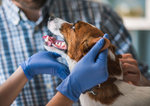 Riviera Beach
Riviera BeachOvercast, 53°
Wind: 9.2 mph, E
 Riviera Beach
Riviera Beach


October 9 was Pet Obesity Awareness Day, and the statistics are staggering.
In 2018, an estimated 60% of cats and 56% of dogs in the United States were overweight or obese according to the Association for Pet Obesity Prevention. Obesity in pets causes many of the same issues in people including:
One study showed that overweight pets live, on average, two years less than pets at a normal body weight. That’s a long time in the life of your beloved Fido or Mittens!
How can you tell if your beloved furry family member has packed on a few (or many) extra pounds? You may notice your pet is slowing down, it seems short of breath with even mild activity, or that it is slowly taking on the shape and size of your favorite ottoman.
One way to see for yourself: when running your hands along your pet’s chest, you should be able to easily feel its ribs with slight padding. If the ribs protrude or are undetectable, your pet is likely at an unhealthy weight.
OK, so your pet has a bit of extra “love” on its body; what can you do now? Dogs and cats are different in their weight-loss needs, so consulting with your veterinarian will help determine the best plan for your individual pet. There are some steps you can take at home to help jumpstart the weight-loss journey.
Sometimes, though, the scale just won’t budge, and you have to enlist the help of professionals. Your veterinarian can help determine if there is an underlying condition, like Cushing’s or thyroid disease, or if your pet may need a prescription weight-loss diet to help curb its cravings and speed up its metabolism.
Call VCA Calvert Veterinary Center to schedule a comprehensive physical exam and an in-depth nutritional counseling, and to formulate a complimentary weight-loss plan for your pet’s unique caloric requirements. They can help you win the battle of the pet bulge!
VCA Calvert Veterinary Center has been serving Pasadena for over 15 years and is currently accepting new clients for dog, cat and exotic animal species. The center is located at 4100 Mountain Road in Pasadena. Call 410-360-7297 or visit www.vcahospitals.com/calvert.
Comments
No comments on this item Please log in to comment by clicking here